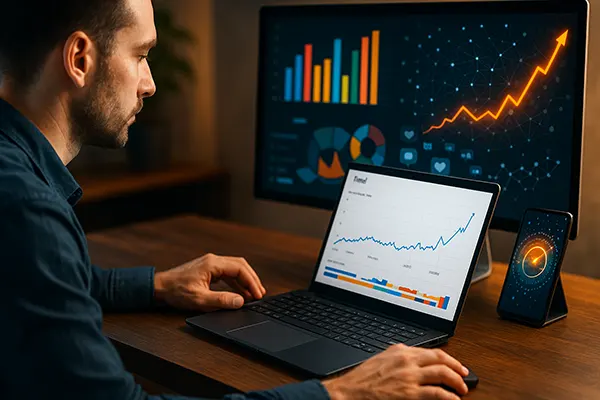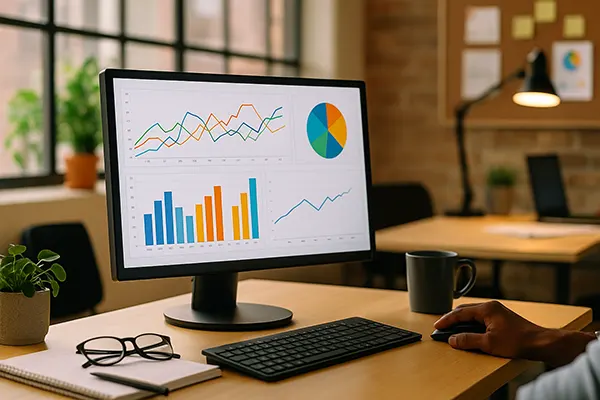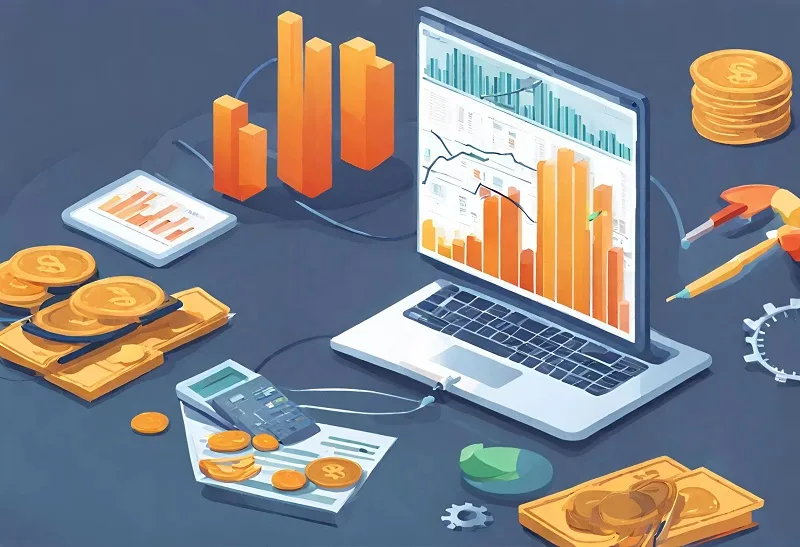
Forecasting Marketing Trends Through Search Analytics and Social Signals
In 2025, the ability to predict emerging market trends has become a critical skill for marketers aiming to maintain a competitive edge. The combination of search analytics, social media insights, and artificial intelligence offers an unprecedented level of foresight into consumer interests. By systematically monitoring search behaviour and online discussions, brands can identify new topics before they reach mass adoption, allowing them to adapt campaigns and product strategies in real time.
Integrating Google Trends, Social Media Insights, and AI
Google Trends provides a clear view of search volume changes over time, helping marketers detect early surges in interest. When combined with data from platforms such as X (formerly Twitter), TikTok, and LinkedIn, it becomes possible to map how a topic is evolving across different digital channels. AI-powered tools can process this data at scale, flagging anomalies and identifying correlations between search spikes and social conversations. This integration offers a more comprehensive perspective than relying on a single source of information.
For example, marketers in the technology sector may spot a growing interest in “Wi-Fi 7 routers” in Google Trends while observing an increase in influencer posts about next-generation connectivity. AI systems can assess whether this is a short-lived buzz or part of a sustained growth curve by comparing historical patterns and regional adoption rates. Such cross-analysis ensures more accurate predictions and prevents resource misallocation.
Additionally, integrating AI sentiment analysis helps distinguish between positive and negative engagement. A rising trend with negative sentiment may require a different marketing approach than one driven by enthusiastic discussion. By refining data interpretation, brands can tailor their messaging to resonate with current audience perceptions.
Real-World Applications in Marketing Campaigns
One notable example is the use of trend forecasting in the beauty industry. In 2024, a skincare brand noticed a sudden increase in searches for “skin barrier repair” alongside a surge of TikTok videos under related hashtags. By quickly launching a targeted campaign, they captured significant market share before larger competitors responded. This demonstrates how early detection and rapid execution can transform niche discussions into mainstream sales opportunities.
In the entertainment sector, film studios are using AI-powered social listening to anticipate which genres or themes will resonate with audiences in the next season. For example, detecting rising online interest in retro science fiction has led to early production of themed content, aligning release schedules with peak consumer curiosity. This method reduces marketing waste by focusing resources on content with proven pre-release appeal.
In e-commerce, retailers are integrating trend analytics into their product sourcing. By identifying rising keywords in seasonal shopping behaviour, they can stock relevant products ahead of demand surges. This proactive inventory strategy not only boosts sales but also positions the retailer as a leader in offering what consumers want most at the right time.
Automation in Trend Monitoring
Automation has shifted trend forecasting from a manual, time-intensive process into a continuous, real-time operation. AI-driven dashboards now aggregate search, social, and sentiment data into a unified interface, enabling instant access to evolving patterns. This allows marketing teams to receive alerts the moment a relevant topic gains traction, shortening the reaction time from weeks to hours.
Automated workflows can also categorise trends by relevance, urgency, and potential revenue impact. For instance, a fashion retailer might set parameters to flag trends with high engagement in their target demographic, filtering out irrelevant noise. This reduces the cognitive load on analysts and ensures focus on actionable insights rather than general chatter.
Furthermore, predictive modelling within these systems can simulate how a trend might develop over weeks or months. This foresight supports long-term campaign planning, ensuring that marketing efforts align with the projected life cycle of a trend rather than its current popularity. In sectors with rapid consumer turnover, such as electronics or fast fashion, this capability is particularly valuable.
Distinguishing Short-Term Hype from Sustainable Trends
Not all spikes in attention represent lasting change. Short-term hype is often driven by viral events, influencer posts, or sudden news coverage, which may fade within days. Sustainable trends, on the other hand, show steady growth across multiple data sources and geographic regions. The key is identifying patterns of consistency rather than intensity alone.
AI can help differentiate these by analysing engagement decay rates. For example, a product that receives millions of mentions in two days but drops to negligible activity in a week is likely a hype-driven phenomenon. Conversely, a topic that maintains moderate but steadily increasing engagement over months may indicate a true shift in consumer preference.
By applying statistical modelling, marketers can assign probability scores to trends, helping teams decide whether to invest heavily, test cautiously, or ignore altogether. This strategic approach minimises wasted resources while maximising opportunities to lead in emerging markets.

Building a Data-Driven Trend Forecasting Framework
Establishing an internal system for trend forecasting begins with defining clear data collection channels. These should include search engines, major social platforms, industry-specific forums, and relevant news outlets. Data should be cleaned and standardised to ensure comparability across sources, and stored in a centralised analytics environment.
Next, brands should implement AI tools capable of multi-variable analysis, correlating search volume shifts with social sentiment and geographic spread. This cross-referencing strengthens the accuracy of predictions and allows for more nuanced decision-making. Internal teams can be trained to interpret data within the context of brand objectives, ensuring insights are actionable.
Finally, trend insights must be integrated into broader marketing operations. This could involve adjusting content calendars, refining ad targeting, or aligning product launches with projected peaks in consumer interest. When executed consistently, this approach turns forecasting from a reactive activity into a proactive growth strategy.
Future Outlook for Trend Prediction in Marketing
Looking ahead, the sophistication of trend forecasting will continue to increase as AI models gain access to more diverse and high-quality data streams. Real-time translation and image recognition will expand the scope of analysis beyond text-based signals, enabling even earlier detection of emerging topics from non-English markets and visual platforms.
We can also expect a stronger emphasis on ethical data use and transparency in AI-driven analytics. As privacy regulations evolve, brands will need to ensure their trend monitoring methods comply with legal standards while maintaining public trust. This will involve clear communication about how consumer data is collected and applied.
Ultimately, brands that invest in robust trend forecasting capabilities today will be best positioned to anticipate, adapt, and thrive in the dynamic marketing landscape of the future. The fusion of search analytics, social signals, and AI offers not just an advantage, but a fundamental shift in how marketing decisions are made.



